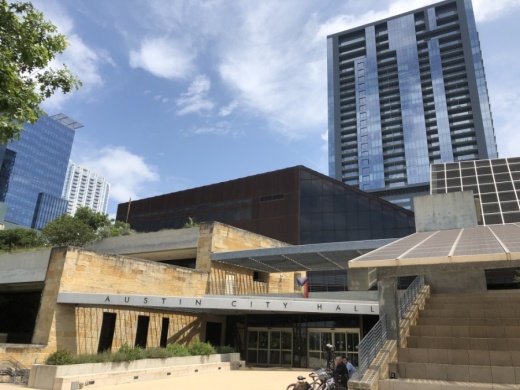Tesla is eyeing a site in the southeastern portion of the county that falls in Austin's extraterritorial jurisdiction, meaning it is outside of the city limits and not subject to Austin's taxing authority. Therefore, the economic incentive negotiations have come not with the city but with Travis County, which agreed to a 70% rebate on the first $1.1 billion Tesla invests in the county and with Del Valle ISD.
With the ball squarely in the court of the school district and the county, Austin City Council Member Jimmy Flannigan asked about the purpose of a briefing provided by Tesla executives to council July 16.
"I'm not quite sure what we're doing here today. I don't feel like any information [presented] is going to be what we're asked to deliberate in the future," Flannigan said.
Austin does not have authority over land use or economic deals when it comes to the Tesla property, but the limited area the council can control is in environmental standards.
As explained by Jerry Rusthoven of Austin's planning department on July 16, House Bill 1445, signed into law in Texas in 2001, provides an agreement for counties and municipalities to work together to regulate certain aspects of a subdivisions in the ETJ—thus preventing builders from being subject to two sets of standards and requirements.
The reasoning behind giving cities some environmental authority over developments technically outside their city limits, Rusthoven said, was lawmakers acknowledging that "water doesn't stop at jurisdictional lines."
The site Tesla is targeting already has an application on file with the city for a planned unit development, or PUD, a zoning tool that gives developers design flexibility. That PUD application was filed by the developers of a site called Austin Green, which would have built more than 12,000 homes along with public park and trail space on the roughly 2,000-acre site.
That PUD application came to City Council in March for the first time. Tesla can, if it chooses, amend that application and bring it back to council any time before March. According to Rusthoven, Tesla has not filed any environmental review documents with details on its plans for the site, which is currently used as a sand and gravel mining operation.
Council Member Pio Renteria said those types of businesses, such as mining and gravel pits, are common in that area of East Austin north of SH 71. The arrival of Tesla, he said, could provide manufacturing jobs to residents in that area that previously were never available.
"You have an opportunity to build in a section of East Austin that has been neglected for all my years living here in Austin," Renteria said.





